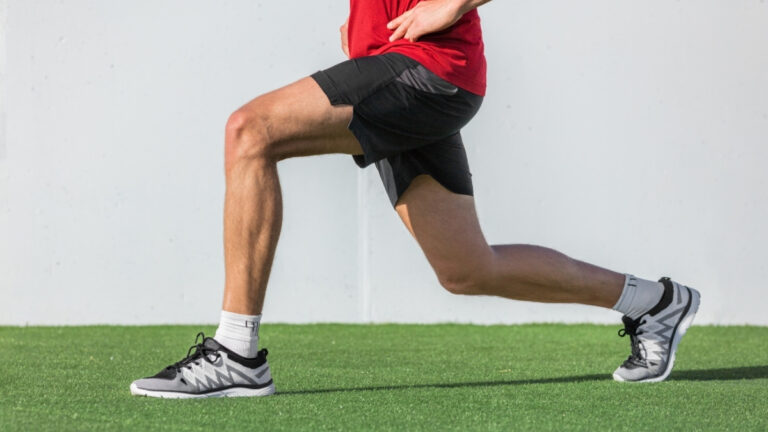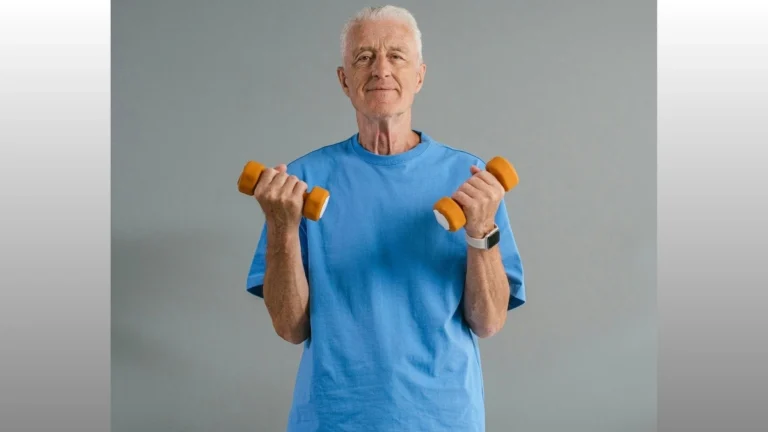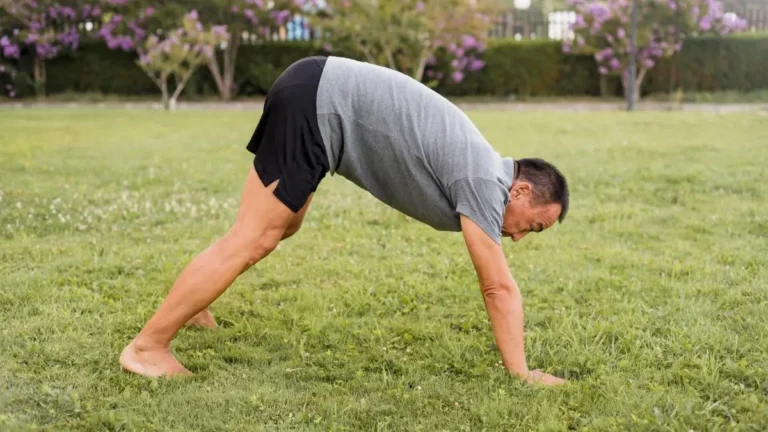Sarcopenia Isn’t Inevitable: The 5-Step Strength Plan to Reverse Muscle Aging

At 62, Margaret couldn’t lift her 18-pound grandson without her arms trembling. She’d walked daily for years but still felt weaker each month. Sound familiar? You might be doing everything “right” yet losing strength anyway. That’s sarcopenia—and here’s the truth: sarcopenia prevention is possible.
Age-related muscle loss happens when your body stops responding to normal exercise and protein. But it’s not irreversible. With the right plan, you can reverse muscle loss, rebuild strength, and stay independent. In this guide, you’ll learn why it happens, the triggers you can control, and the 5 proven steps to start building muscle after 50—beginning today.
What Is Sarcopenia and Why It’s Not “Normal Aging”
Sarcopenia is the medical term for serious muscle loss. After age 30, you lose 3-8% of your muscle each decade. After 60, it speeds up.
This isn’t normal aging. It’s a disease you can prevent.
Here’s the difference: Normal aging means slightly weaker muscles. Sarcopenia means you can’t carry groceries, get off the floor, or live independently.
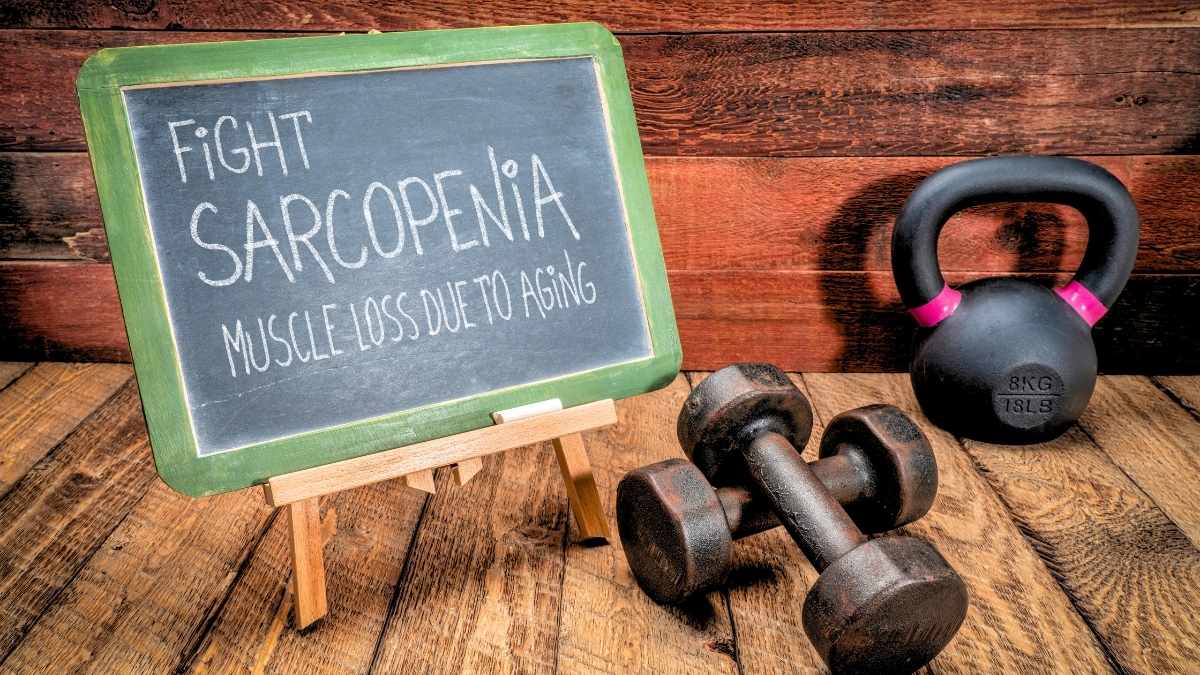
10-16% of people over 65 have sarcopenia. By age 80, that jumps to 50%.
There are three types. Primary sarcopenia comes from aging alone. Secondary sarcopenia happens because you stopped moving or got sick. Combined is both at once.
Doctors miss it because they don’t test for it. By the time you notice weakness, you’ve already lost years of muscle.
The real danger? It feeds itself. Less muscle means slower metabolism. That causes fat gain. Fat creates inflammation. Inflammation destroys more muscle.
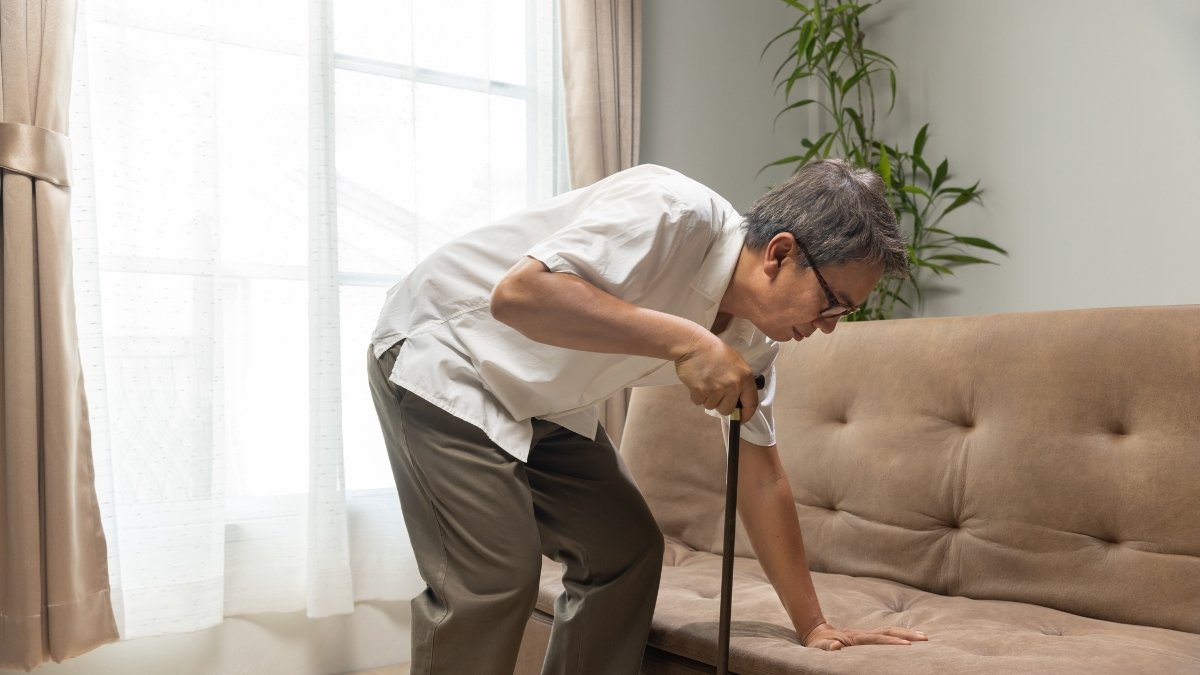
Take two 70-year-olds. One lifted weights twice a week for ten years. One just walked. The lifter has 15-20 pounds more muscle. That’s the difference between opening jars yourself and asking for help.
Ten pounds of muscle loss means:
- You need both hands to carry one grocery bag
- Getting off the floor takes three tries
- Your fall risk jumps 200-300%
Each decade you skip strength training after 50, you lose 15% of your strength. That’s not aging. That’s a choice.
Age-related muscle loss happens to everyone. Sarcopenia only happens when you let it. The key to sarcopenia prevention starts with knowing what you’re fighting.
The 5 Hidden Triggers Accelerating Your Muscle Loss
You’re eating protein. You’re staying active. But your muscles keep shrinking anyway.
Five biological changes are sabotaging your efforts. Here’s what’s actually happening inside your body.
1. Your Muscles Stop “Hearing” Protein Signals
Young muscles respond to 20 grams of protein. Yours need 40 grams to get the same response.

This is called anabolic resistance. Your muscles become deaf to protein signals. It’s why eating the same amount of protein you ate at 30 doesn’t work at 60. You’re not eating enough to trigger muscle growth anymore.
2. Inflammation Eats Your Muscle
Two chemicals in your blood—IL-6 and TNF-alpha—directly attack muscle tissue. They’re inflammation markers that increase with age.

Chronic inflammation doesn’t just hurt. It destroys muscle cells every single day. The more inflamed you are, the faster you lose muscle. This is why people with arthritis or diabetes lose muscle faster.
3. Your Hormones Drop Off a Cliff
Testosterone, growth hormone, and IGF-1 all decline after 40. These hormones tell your body to build muscle.

Without them, your body defaults to breaking down muscle instead of building it. Men lose testosterone at 1-2% per year. Women hit menopause and estrogen crashes. Both paths lead to age-related muscle loss.
4. Your Muscle Cells Lose Power
Mitochondria are the power plants inside your cells. After 50, you lose 50% of them.
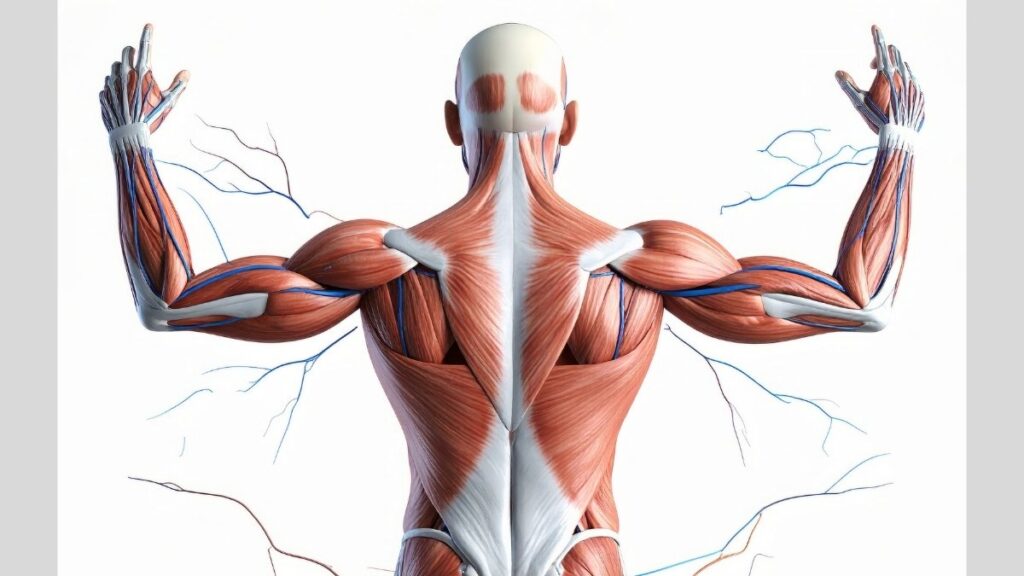
Less power means weaker contractions. Weaker contractions mean you can’t lift as much. This creates a cycle. Weak muscles get weaker because they can’t work hard enough to stay strong.
5. Your Nerves Stop Talking to Your Muscles
Motor neurons send signals from your brain to your muscles. These connections break down with age.

When the signal doesn’t reach the muscle, that muscle fiber dies. You lose entire chunks of muscle that never get the message to contract. This is why you feel clumsy or uncoordinated.
Why Dieting Makes Everything Worse
Here’s the worst part. If you’re trying to lose weight by cutting calories, you’re speeding up muscle loss.
Calorie restriction plus aging equals disaster. Your body needs protein and calories to maintain muscle. Cut too much and your body burns muscle for energy. You lose weight on the scale but it’s the wrong kind of weight.

The good news? You can reverse muscle loss by fixing these five triggers. Each one has a solution. That’s what the next five steps will show you.
Step 1 – The Resistance Training Protocol That Actually Builds Muscle After 50
Light weights won’t cut it. If you can do endless reps without effort, you’re not challenging your muscles enough. For building muscle after 50, aim for 70–85% of your one-rep max—a weight you can lift about 8–10 times. Research from McMaster University showed adults 65+ gained 3 pounds of muscle in 12 weeks using proper resistance training.
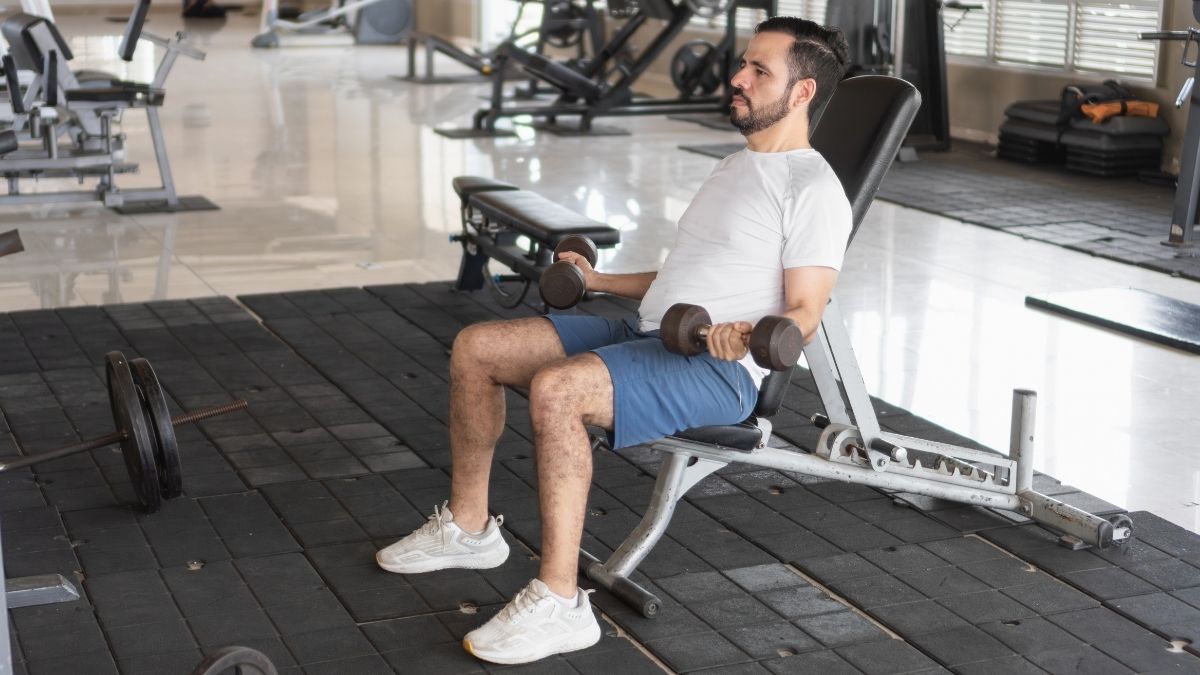
Do 10–15 sets per muscle group per week, focusing on compound movements like squats, presses, and rows. Train 2–3 times per week, resting between sessions. Add 2–5% more weight every 1–2 weeks to keep progressing.
Common mistakes: lifting too light, skipping workouts, and never tracking progress. These stop strength training for sarcopenia before it even starts.
Step 2 – The Protein Strategy for Anabolic Resistance
Older muscles need more protein to grow. Aim for 1.2–1.6g per kg of body weight daily—that’s almost double the usual amount. Each meal should have at least 40g protein with 3g leucine to trigger muscle repair.

Eat within 2 hours after training and add 30–40g protein before bed to stop overnight loss. Great sources include eggs, chicken, fish, Greek yogurt, and whey protein. For a sarcopenia prevention diet, focus on complete proteins—they’re the key to reverse muscle loss with nutrition.
Step 3 – The 4 Essential Supplements Backed by Science
Smart supplements make real results stick. Take creatine monohydrate (5g daily) to boost strength up to 14%. Add vitamin D (2,000–4,000 IU) and omega-3s (2–4g EPA/DHA) for stronger muscles and less inflammation.

HMB (3g daily) helps preserve muscle when you’re less active. Skip testosterone boosters and collagen-only powders—they don’t work. These proven sarcopenia prevention supplements help you reverse muscle loss naturally and support building muscle after 50 safely and affordably.
Step 4 – Optimizing Sleep and Recovery for Muscle Growth
Muscle repair happens while you sleep. Deep sleep (stages 3–4) triggers growth hormone release, driving recovery and strength gains. Aim for 7–9 hours nightly with at least 20–25% in deep sleep.

Rest each muscle group 48–72 hours before training again. Use gentle movement, stretching, or foam rolling on off days. Poor sleep or overtraining slows sarcopenia recovery and worsens age-related muscle loss prevention. For building muscle after 50, protect your sleep—it’s your most powerful recovery tool.
Step 5 – Reducing Inflammation to Stop Muscle Breakdown
Chronic inflammation quietly destroys muscle. This “inflammaging” process speeds up loss even with good workouts. Eat anti-inflammatory foods like fish, berries, olive oil, and leafy greens—key parts of the Mediterranean diet.

Cut back on sugar, processed meats, and trans fat
Common Mistakes That Sabotage Sarcopenia Prevention
You can follow every step in this guide and still see zero results. Here are the five sarcopenia prevention mistakes that kill progress.
Check yourself against this list. Most people make at least two of these errors.
Mistake 1: Training Too Light (The “Senior Citizen” Trap)
You’re using 5-pound dumbbells because someone said “seniors should go easy.”
That advice is destroying your muscles. Light weights maintain what you have—if you’re lucky. They don’t build anything new.
How to spot it: If you can do 15+ reps without struggling, your weight is too light. If you finish a workout barely sweating, you’re not working hard enough.

The fix: Use weights that make reps 8-10 difficult. You should barely finish that last rep. Add 2-5% more weight every two weeks.
Real example: Janet, 67, used 3-pound dumbbells for two years. No progress. She switched to 15-pound dumbbells. Gained 4 pounds of muscle in 16 weeks.
Mistake 2: Eating Protein Like You’re Still 30
You eat protein at dinner. Maybe a little at lunch. That’s not enough for building muscle after 50.
Your body needs 40 grams of protein per meal to trigger muscle growth. Eating 80 grams at dinner and 10 grams at breakfast doesn’t work. Your body can’t store protein for later.

How to spot it: Add up your protein at each meal. If any meal has less than 30 grams, you’re making this mistake.
The fix: Spread protein across three meals. 40 grams at breakfast, 40 at lunch, 40 at dinner. That’s 120 grams total—enough for most people.
Real example: Tom, 62, ate 100 grams of protein daily. But 70 grams came at dinner. He redistributed to 35-35-30. Muscle growth doubled in the next eight weeks.
Mistake 3: Running Instead of Lifting
You walk or jog five days a week. You think that’s enough exercise.
Cardio doesn’t build muscle after 50. It burns it. Too much cardio without resistance training speeds up muscle loss.
How to spot it: If you do more than 60 minutes of cardio per week and less than 60 minutes of lifting, you’re doing this wrong.

The fix: Lift weights 3 times per week (60-90 minutes total). Walk 2-3 times per week (30 minutes). That’s the ratio that works.
Real example: Linda, 58, jogged 5 miles daily. Lost 6 pounds in six months—but 4 pounds was muscle. She cut jogging to twice weekly, added three lifting days. Gained 3 pounds of muscle in 12 weeks.
Mistake 4: Training Once or Twice… Sometimes
You lift when you feel like it. Maybe once this week. Maybe twice next week. Zero the week after.
Muscle growth requires consistent stimulus. Missing workouts resets your progress. You end up maintaining (at best) instead of building.
How to spot it: Look at your last month. If you missed more than two scheduled workouts, inconsistency is your problem.
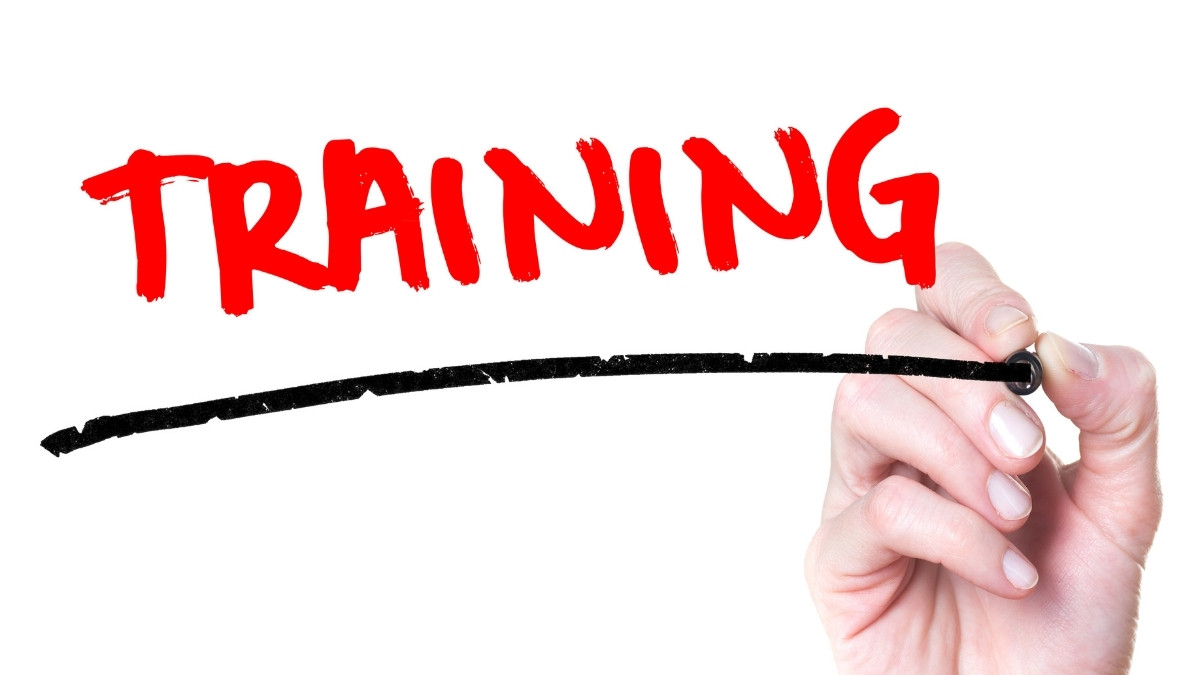
The fix: Pick three specific days. Monday-Wednesday-Friday. Or Tuesday-Thursday-Saturday. Mark them on your calendar. Treat them like doctor appointments you can’t miss.
Real example: Mike, 65, lifted “when he had time.” That meant 1-2 times per week, sometimes zero. He locked in Monday-Wednesday-Friday at 7am. After making this one change, he gained muscle for the first time in five years.
Mistake 5: Flying Blind (Not Tracking Anything)
You can’t remember what weight you used last workout. You’re not sure if you’re getting stronger. You don’t measure your arms or legs.
If you don’t track, you don’t know if you’re progressing. You might do the same workout with the same weights for months and wonder why nothing changes.

How to spot it: Can you tell me exactly what you lifted last Monday? What weight? How many reps? If not, you’re not tracking.
The fix: Get a small notebook. Write down every workout. Exercise name, weight used, sets, reps. Takes 30 seconds between sets. Compare to last week.
Real example: Carol, 61, “felt” like she was getting stronger. But after tracking for four weeks, she realized she’d used the same weights for six months. She started adding 2.5 pounds every two weeks. Strength jumped 25% in three months.
Finally,
This 5-step strength plan confirms that sarcopenia is not simply a fact of aging you must accept. You hold the power to significantly influence your body’s strength and vitality well into your later years. Consistent resistance training, combined with smart nutrition and recovery, provides the foundation for reversing muscle aging.

Taking action now means preserving your functional independence and enhancing your overall quality of life. Start implementing these steps today; you can certainly build a stronger, more resilient future. Your peak strength years are not behind you, they are waiting for you.


